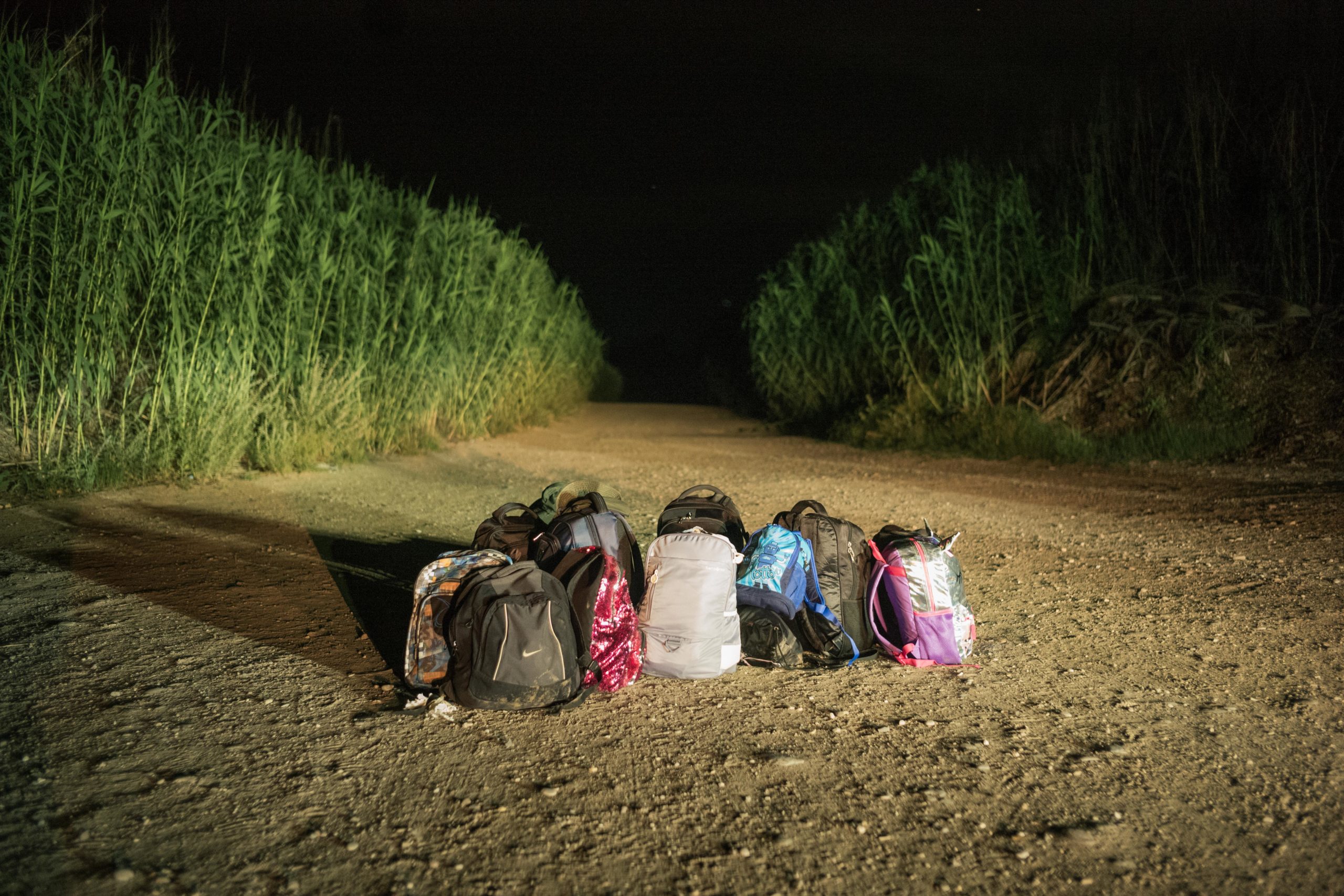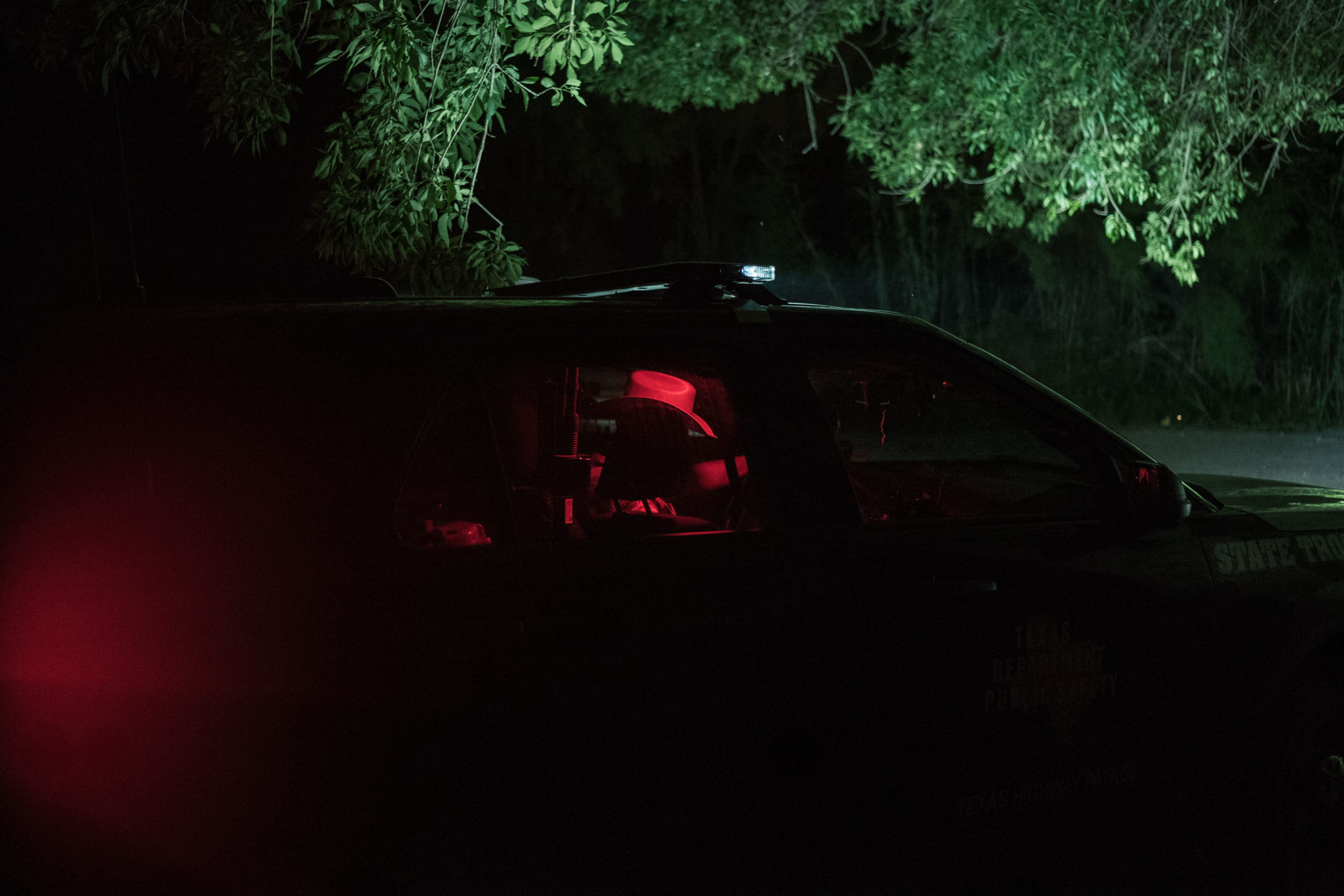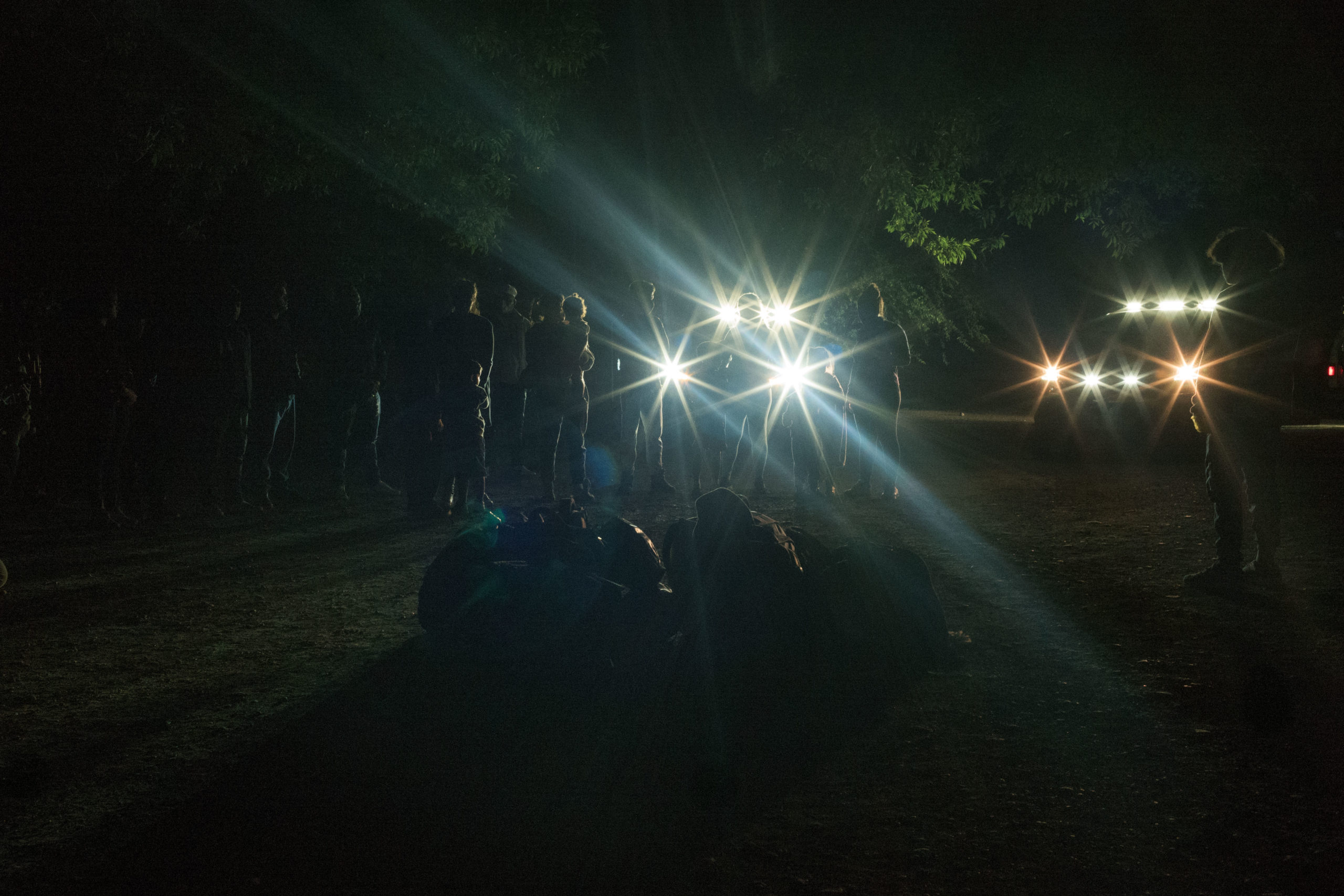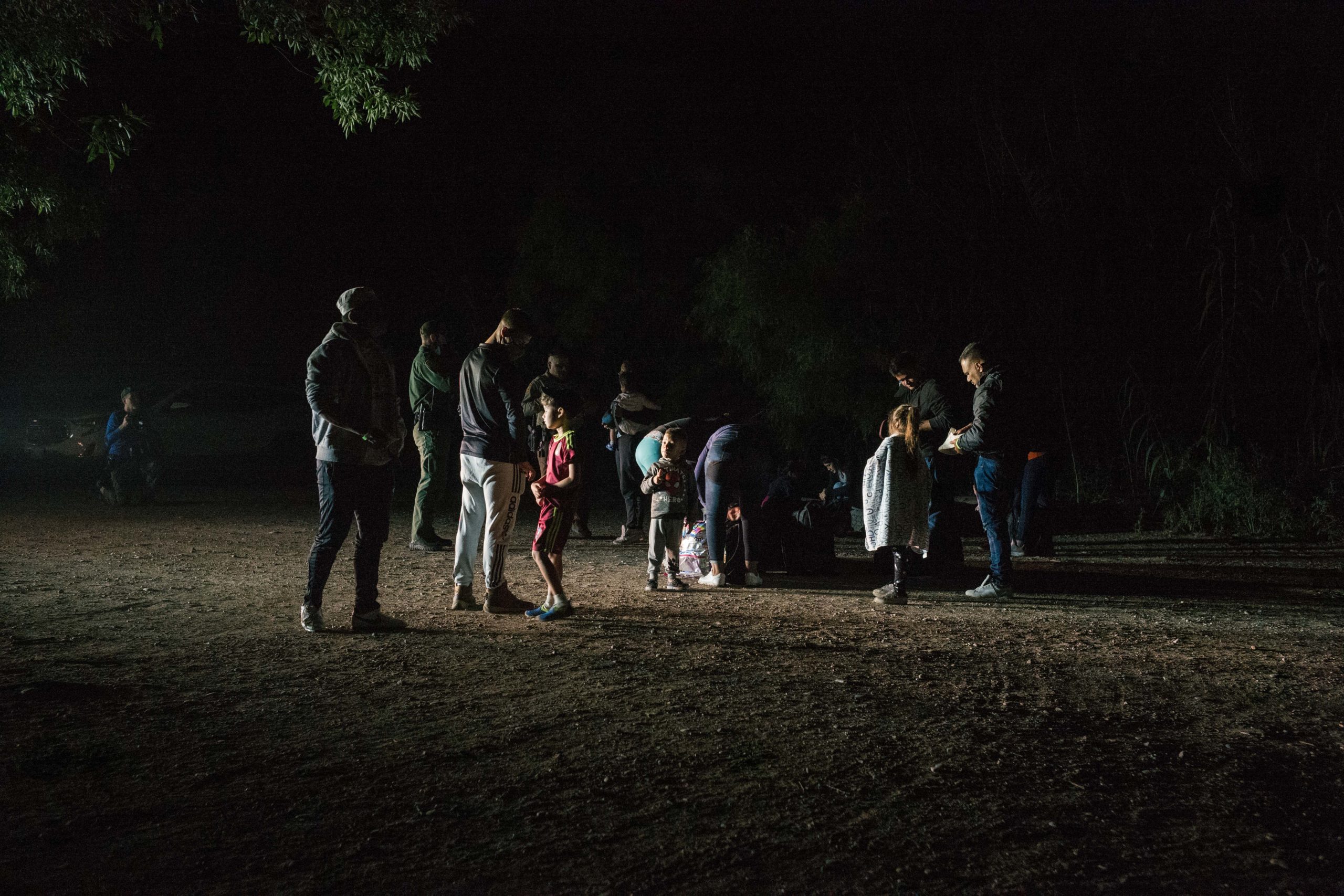4 A.M. in Del Rio
As the tide drops, navigating the banks of the Rio Grande becomes more manageable. Along the 1,200-mile boundary are points where the United States and Mexico are only feet away from each other, the river easily crossed in the right conditions. In the dead of a cloudy night in June, a group of migrants made their way across the river, across the invisible line dividing the two countries.
After fording the river, the group walked toward two Department of Public Safety officers who were parked by a dusty road near the riverbank. The officers were part of a 1,000-member deployment to the border through Operation Lone Star, Texas’ latest effort to “combat the smuggling of people and drugs into Texas,’’ according to a press release by the governor’s office.
This increase in law enforcement personnel is part of a larger trend to continue to militarize the border, particularly now that Governor Greg Abbott is facing mounting challenges from within his party for the executive position. To compensate, Abbott has continued to launch initiatives aimed at strengthening his credibility with Republican voters at the expense of migrants who have a right to claim asylum.
Nearly 200,000 people attempted to cross the southern border in June, according to data compiled by U.S. Customs and Border Protection (CBP). In Del Rio, there has been a 500 percent increase in CBP encounters compared with last year. Roughly 25,000 people encountered CBP officials throughout all of 2020, compared with nearly 150,000 in June of this year alone. The entire county of Val Verde, where this rise is taking place, has just under 49,000 residents.
This year, Del Rio has seen the largest increase in CBP encounters in all of Texas, compared with data from 2020. However, not all who have crossed will be able to remain, as the Biden administration has continued to enforce policies that began under the Trump administration.
As one officer contacted CBP, another began interviewing the migrants. All turned themselves over willingly, hoping to claim asylum, a process protected by international law to grant protection to people who have suffered persecution and a legal form of migration under U.S. law. The group included women and children, single men, and families coming from the Caribbean and Central and South America.
As the officers collected their information, a child walked toward the group, sniffling and crying. She dragged her feet, hesitantly approaching the huddled group of journalists, officers, and soon-to-be-processed migrants. She had crossed at a different location. The tide had gone up, and the river began moving a little faster. “Are you alone?” one of the officers asked. “My mom, I lost her,” she cried. A van from CBP arrived shortly after, taking as many of the migrants as it could carry for processing, including the child. There was no sign of her mother.

The luggage migrants carried with them across the river sits on the ground near the location where they crossed. The migrants were separated from their belongings by DPS officers while the officers questioned them, and they were later loaded into a CBP van without it.

A DPS officer sits inside his vehicle after a group of migrants turned themselves in for processing. The officer questioned the migrants and then requested assistance from CBP. According to CBP data, nearly 150,000 people attempted to cross the southern border in June.

A group of migrants, illuminated by headlights from DPS vehicles, stands on the road and waits for CBP to arrive. The group is a mix of migrants from the Caribbean and Central and South America.

A group of migrants stands on the road and waits for CBP to arrive so they can request asylum.
Top image: A migrant child who was separated from her mother cries while walking toward a group of DPS officers and migrants. She was separated from her mother while attempting to cross the river.







